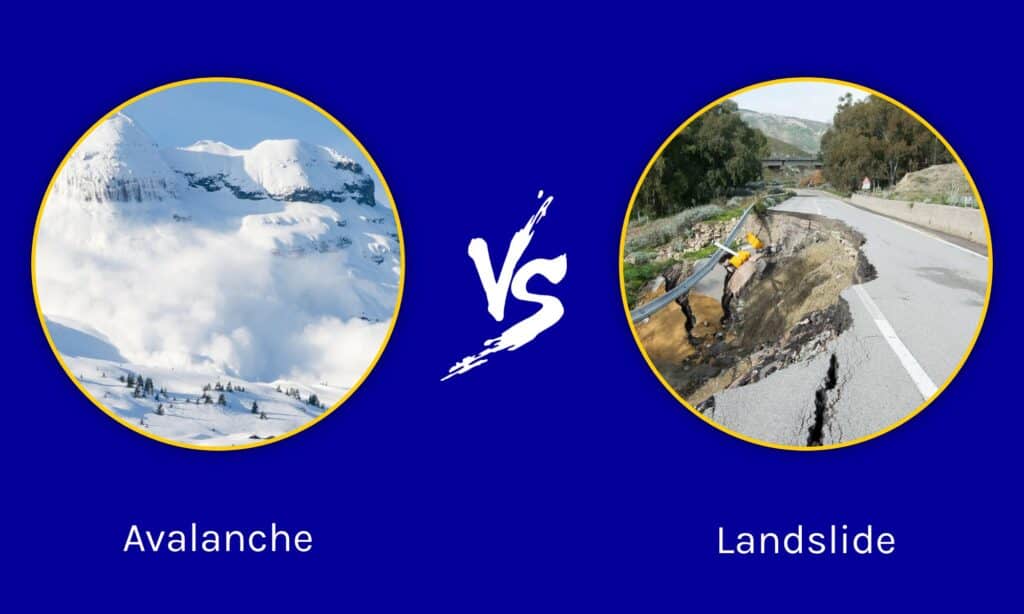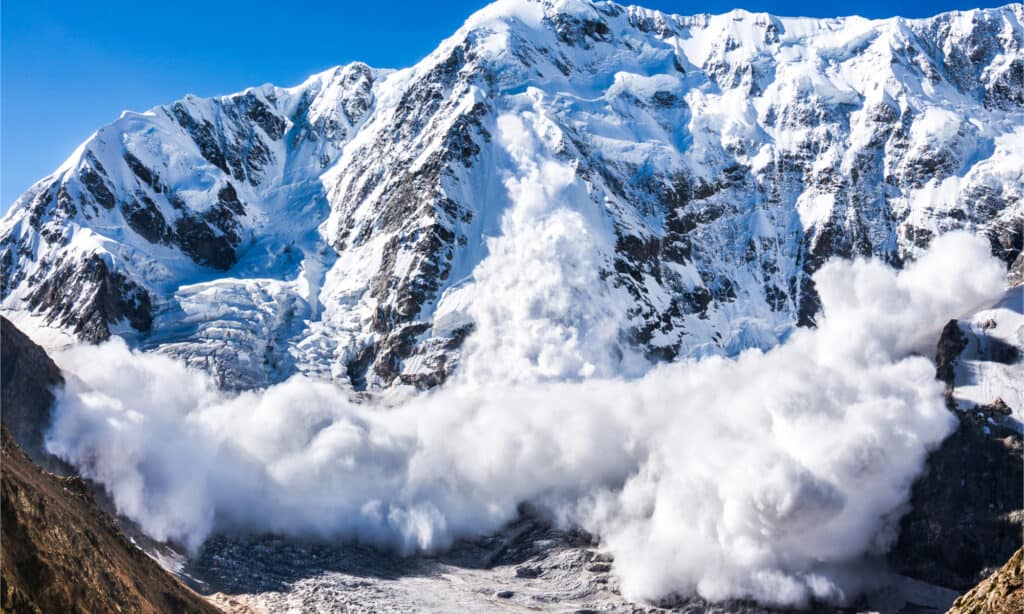Landslides and avalanches are severe mass-wasting processes that involve movement of earth matters. These events are very similar in their movements but differ in terms of the major causes, triggers, content, places of occurrence and levels of devastation.
In this article, we’ll be taking a dive into these events and examining their differences as well as their varying impacts on the environment. We shall also be providing explicit answers to the question of which of these two events (avalanche and landslide) is more devastating while making due recourse to facts and past events.
Avalanche vs Landslide Compared: Which is More Devastating?

The short answer is- avalanches and landslides are equally devastating. It all depends on the force of the movement, the content and the level of human inhabitation around the affected areas.
However, going by history, landslides have been more frequent and destructive than avalanches.
The list below shows a combined list of some of the most lethal avalanches and landslides in human history:
- The Western Iran Landslide Of June 1990 which resulted in an estimated 40,000-50,000 people losing their lives at once.
- The Colombia Debris Flow/Mud Slide/ of November 1985 which caused an estimated 23,000 deaths.
- The Hungary, Peru debris avalanche of May 31, 1970 which caused 20,000 deaths.
- The Huarz, Peru Avalanche of 1941 which led to 6,000 deaths.
Going by the categorizations from the list above, we could say that the worst avalanche in history falls short of the worst landslide in history in terms of devastation to human lives. However, further examination reveals that differences in magnitude of devastation cannot be properly established since avalanches are a type of landslides as we are about to see.
What is an Avalanche?

Avalanches primarily involve snow, ice, and air.
©Lysogor Roman/Shutterstock.com
An avalanche involves a quick and violent downslope movement of a large mass of ice and snow. The avalanche could also move debris and rocks if the snowpack grows fast enough. However, avalanches primarily involve snow, ice, and air and they often occur in snowy regions during winter.
What is a Landslide?

A landslide is the mass movement of earth materials down a slope and across land surfaces.
©iStock.com/Josephine Jullian
Landslide is a generic term that involves the mass movement of earth materials including debris, soil, and rocks down a slope and across land surfaces. They can occur in different environments ranging from coastal cliffs to mountains. Unlike avalanches, they happen on lands with high-gradient slopes and their occurrences are not limited to winter.
What is the Difference Between a Landslide and an Avalanche?
One of the differences between a landslide and an avalanche is the matter they move. While landslides mostly move soil particles, rocks, and mud, avalanches primarily deal in snow, ice, and air.
Also, while avalanches often occur in wintery areas where snowpacks are prone to mass movement, landslides happen on lands with hills and steep slopes.
Landslides are often triggered by a number of factors including gravity, rainfall, severe erosion, human activities and extreme seismic events like earthquakes. Avalanches, on the other hand, are caused by heavy snowstorms, snow layering, vibrations and human activities.
The differences between the two events is largely seen in their areas of occurrence and content as seen above.
Landslides and Avalanches Caused By Earthquakes
Landslides and avalanches can have similar causes in that they can both be triggered by earthquakes. Earthquake-induced landslides occur when earthquakes weaken a slope and trigger a down-slope movement of earth materials and debris. In early 1994, the NorthRidge earthquake (magnitude 6.7) caused about 11,000 landslides across the San Fernando valley.
An avalanche can also be triggered by earthquakes and this is often called earthquake-induced avalanche. This one occurs due to vibrations from the earthquake which may decrease the strength of the snow-covered slopes in snowy regions with high seismic proclivities.
An example of an earthquake-induced avalanche is the avalanche that followed the 7.1- magnitude Canterbury earthquake that plagued New Zealand in 2010. An avalanche also followed the 9.2-magnitide Alaska earthquake in 1964 according to the renowned Avalanche Review journal.
Causes Of Landslides

The primary trigger of landslides is the impact of gravity on weakened slope materials.
©iStock.com/atlantic-kid
Landslides are downright horrible geological events and they are often caused by a number of factors ranging from human activities to environmental factors.
Experts are in unanimous agreement that the primary trigger of landslides is the impact of gravity on weakened slope materials. Other environmental causes include earthquakes, erosion, volcanic eruptions, heavy rainfall, wildfires amongst others.
Landslides are also triggered due to human activities like deforestation (timber harvesting), mining activities, inadequate slope grading amongst others.
Basically, a culmination of factors, both human and environmental, are responsible for the vast majority of landslides.
What is a Debris Avalanche?
A debris avalanche is basically an avalanche variant characterized by its large volume and incredibly rapid movement. This variant happens following the collapse of a slope and it basically transports debris away from the slope. It often has a very liquefied content which makes its entire process similar to the snow avalanche.
Studies show that it travels at an insane speed of 100m per second and can flow across a 6.2-mile distance or more.
What is the Difference Between a Debris Flow and a Debris Avalanche?
Considering the presence of the word “debris” in both terms, it is not far-fetched to think that they are similar. And the truth is, they are, except they are also different in some ways as we are about to see.
A debris flow is a mass movement of mud, sand, soil, rock, water and air, down a slope and induced by gravity. For a mass wasting process to be considered a debris flow, the materials must be very loose, capable of flowing and 50% of the matter should be clay-sized.
Causes of a debris flow include sudden flow of water from rainfall and the likes, erosion of the support from the base of the slope as well as wildfires and volcanic eruptions.
Hence, debris avalanches are debris flows with more rapid flows and better development on steeper slopes. The two differ based on the speed of their flows and the debris avalanche has the fastest flow of the duo, making it a lot more damaging.
There are theories that trapped air could further increase the speed of an avalanche by providing a cushioning effect.
The photo featured at the top of this post is © Lysogor Roman/Shutterstock.com
Thank you for reading! Have some feedback for us? Contact the AZ Animals editorial team.







